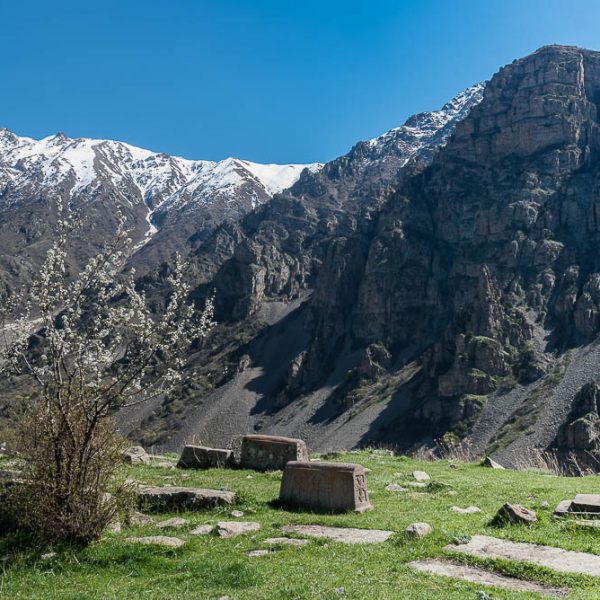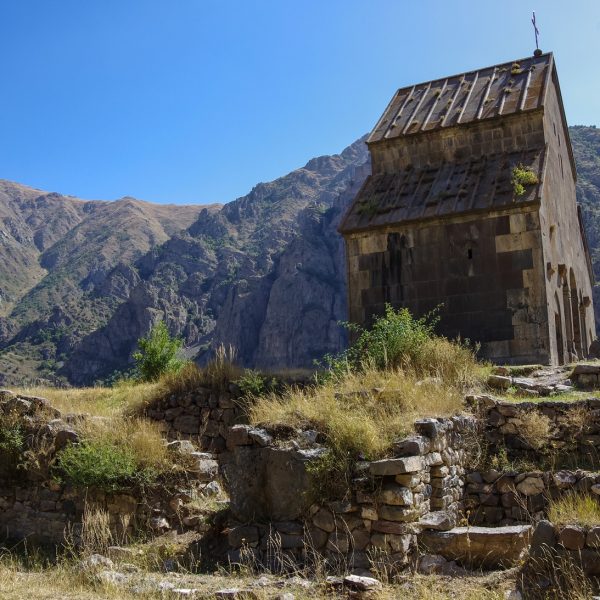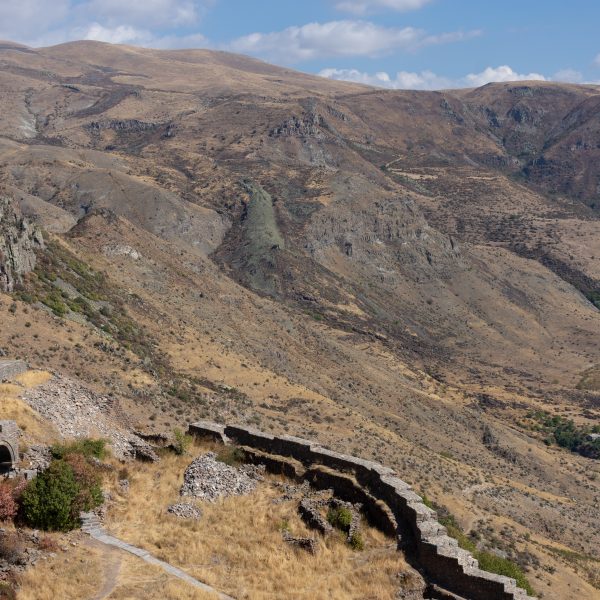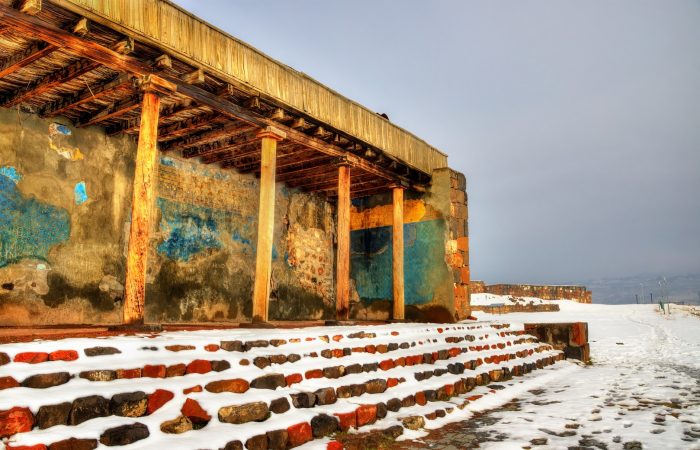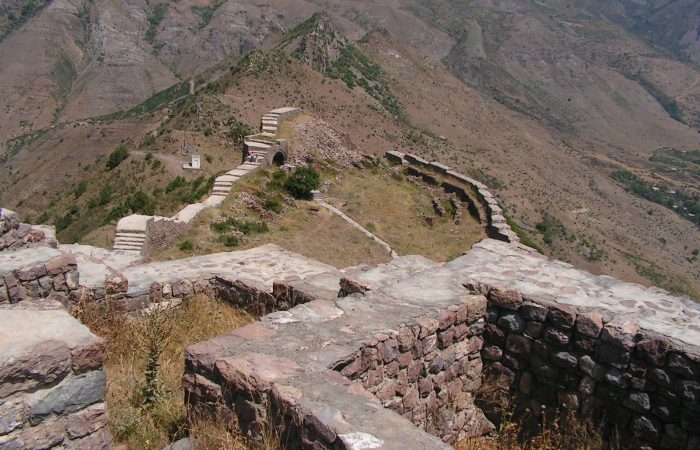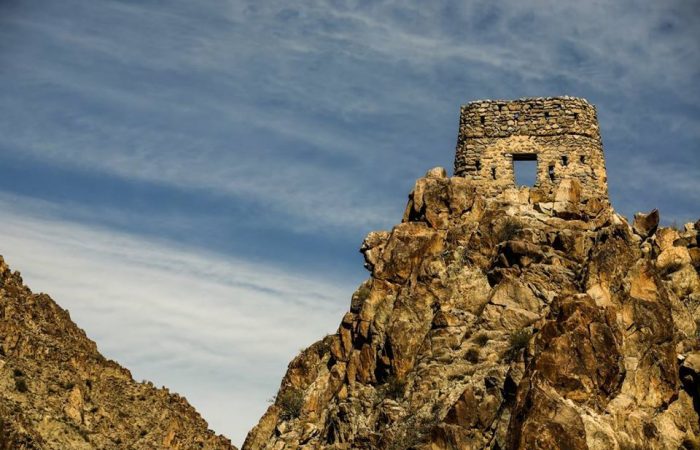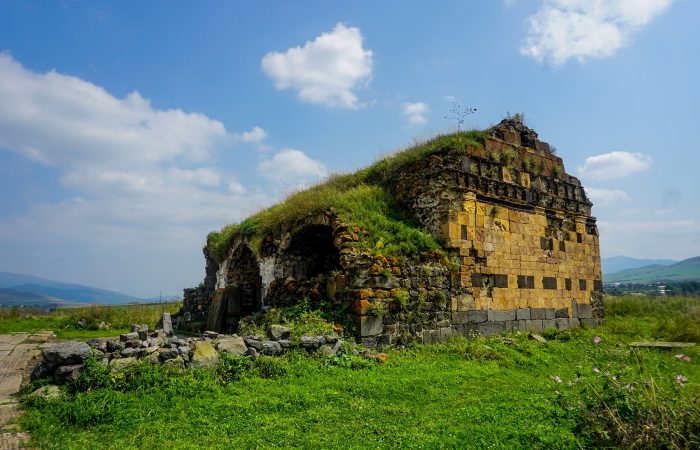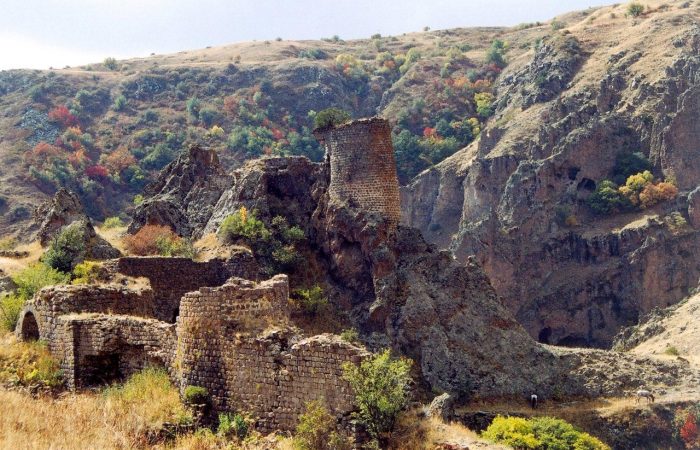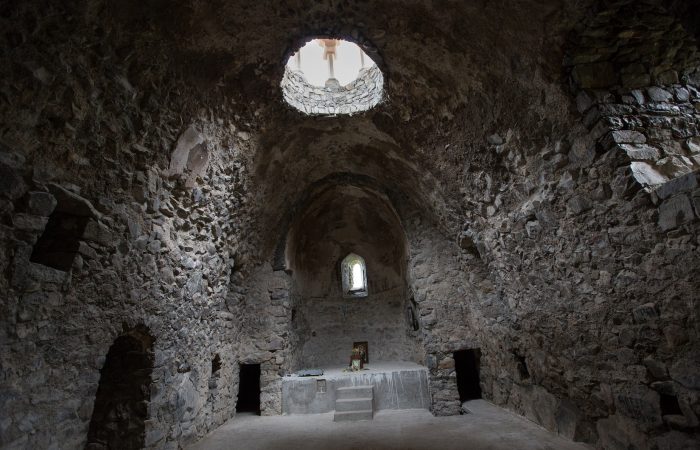Yeghegis: General
Yeghegis was one of the richest cities of Medieval Armenia. During the 13th-14th centuries it was the seat of Orbelyan princely family. In the 15th century the princely family was greatly weakened by the attacks of Timur Lenk, Turkmen and Persians. Furthermore, the city was ruined by an earthquake because of which the majority of population exiled to Persia abandoned the city. The later inhabitants of the city named it Alayaz. The village got its former name only after 1988; that was the period when it was populated by Armenians who had escaped the Sumgayit massacres committed against them in 1988 within February 27-29. (Sumgayit is a city in Azerbaijan.)
But the village represents interest not only because of its history but also because of its remarkable monuments as without them this village would probably not be this appealing to visitors.
Yeghegis: Khatchkars
The entry to the village is most interesting. On the right and left of the entry there are two khatchkars (cross-stones). The khatchkar on the right dates to the 12th-13th centuries, and it’s remarkable. On the upper part of the khatchkar the carving of Jesus Christ on the throne can be seen with two saints on either sides. The khatchkar to the north is opposite the stone mill.
Close to these monuments there is a walled yard. It’s where the tombstones of the Orbelyan family and several khatchkars dedicated to them are. The khatchkars are placed next to each other.
Yeghegis: Saint Astvatsatsin Chapel
The Chapel of Saint Astvatsatsin (Holy Mother) was built on the ruins of an older church. It was constructed in 1703. Below the arch of the lintel of the window found on the western wall there is a khatchkar. On both sides of the arch of the door lintel there are water nymphs bearing crowns. The image of the water nymphs was widely spread in the Middle Ages. In all likelihood, it symbolized royal authority. The leaves of the Tree of Life are carved behind each of the images.
Yeghegis: Saint Karapet Church
The Church of Saint Karapet dates to the 13th century. The inscriptions found on the church let conclude it was built by Nerses Nahatak (Martyr).
The church is rather well preserved. It’s a cruciform and small domed church where numerous khatchkars and tombstones can be seen. At the entry to the yard there is a half-buried khatchkar, which dates to 1301. There is another khatchkar, which dates to 699 and only this date makes this khatchkar an outstanding carving.
Yeghegis: Zorats Church
Recent excavation held at the site uncovered a number of building bases, which date to the Middle Ages. This church as well is believed to be built in those times.
Zorats Church was built by Bishop Stepanos Tarsaich in the 14th century. Back then Armenia was under the Mongol control. Mongols used to force Armenian forces into the battle of Syria in which Armenians had to fight against the Mamelukes.
The church has unique architectural solutions. Present-day Armenia lacks other similar structures. The church doesn’t have a vaulted or domed closed hall. It doesn’t have any inner hall at all. The only parts that have a roof over them are the eastern altar and the two annexes next to it. The altar is relatively higher, which is another outstanding feature of this church. To imagine the height of the altar it should be said that the height is convenient for those dismounting a horse. In fact, the church was built for that purpose.
Zorats Church particularly served those soldiers that went into war. These soldiers used to come to the church to be blessed and to receive Holy Communion. It was a common thing to bless the army and the horses before the war, but notably there is no any other church in Armenia that was built for mainly that goal.
Rather well preserved walls and window lintels were also discovered.
In front of the church there are several tombstones, which bear a clearly notable hole. The overall purpose of those holes is not yet clear. Some of the scientists suggest the stones date to the Old Age and the site be used for cult and worship before the Christian era. The church was reconstructed in the 20th century.
Yeghegis: Jewish Cemetery
Perhaps not many people would think there might be a Jewish Cemetery in Armenia. There is, and it is located in Yeghegis and dates to the 13th-14th centuries. There is no any historical evidence regarding the Jewish Community that once resided there. The cemetery includes around 40 tombstones out of which ten bear inscriptions.
The inscriptions are made in Hebrew and Aramaic. The names of the Jewish people buried there were widely spread among the Jews living in Persia, therefore quite possibly the Jewish Community of Yeghegis had Persian origin. The oldest tombstone dates to 1266. The last date mentioned is 1346. It means that the cemetery operated for at least 80 years. Interestingly, until now it’s not clear how the Jewish Community originated in this village and under what circumstances it collapsed.
As said, some of the tombstones have inscriptions based on which a conclusion is made concerning the life of those people and their hopes for the celestial kingdom. The inscriptions include citations from the Bible as well as Hebrew names.
The cemetery was made open for public only on May 11, 2009. Note that May 11 was declared as the day when people can go there on a pilgrimage.

